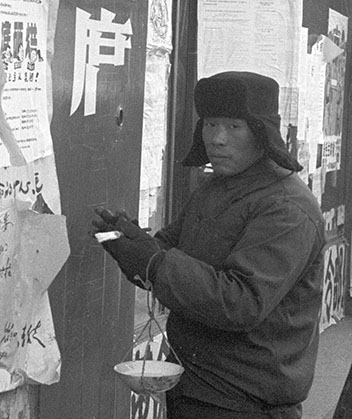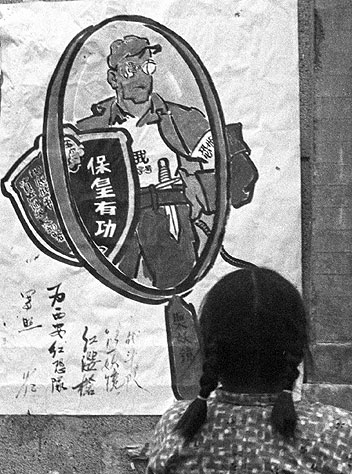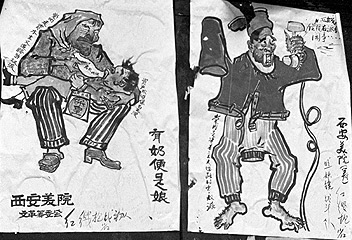Supplementary collections
Photographs
With his Beijing residence within five minutes walk of the Tiananmen Square Sigurdson had ample opportunities to directly observe the manifestations of the Cultural Revolution. This brought him in direct contact with the Red Guards who were amassing in the lane (hutong) outside his house and in the adjoining streets before marching to the Square to pay tribute to Chairman Mao. On seven occasions Tiananmen was completely filled with more than one million Red Guards. They were waiting in tattered shoes, many without any socks, in early winter mornings sipping hot tea that was served from provisional canteens. Mingling with the animated young people Sigurdson often brought his Leica M3 camera.
Preparation for the Cultural Revolution started already in late 1965 but real events did not become obvious to most foreigners until late summer the following year. One morning guards were renaming the streets to weed out the remembrance of the old capitalist/feudal society. The main hospital in Central Beijing that had been established with a grant from Rockefeller Foundation was renamed Anti-Imperialist Hospital. Guests were in the restaurants asked to serve themselves and wash their own dishes. This reform lasted only for a few days because of breakage and utter confusion.
Everything was to change. On one of the first days of rampage Sigurdson went into the oldest section of Beijing Hotel and found a large number of red guards making new arrangements. He saw large red Chinese-style lanterns still hanging in the lobby and close to the reception there was a sign saying “Foreign exchange”. He went to speak to some red guards who were apparently responsible for changing the character of the hotel, and ventured the opinion that the lanterns appeared to be remnants of old China. One of Red Guards quickly decided that they should be removed. Following that the Red Guards also realised that signs with foreign text indicated China’s continued subservient attitude to foreign powers. They agreed and immediately ordered the sign to be removed, to the protests of the clerk who in vain argued that foreign guests at the hotel would no longer know where to change their money.
Events in the streets were much grimmer. In a number of places the red guards had posted lists of people and whole families who should be struggled against. They were days after day hauled into streets and accused of all kinds of crimes against the revolution. Their belongings like old imported furniture and foreign books were confiscated, often destroyed and occasionally burned in the streets. The stone lions that adorned the gates outside many courtyard houses had their heads chopped off.
A large collection of photographs offer glimpses of the daily political life in Beijing during the tumultuous period from the Summer of 1966 until finalizing his duty at the Swedish Embassy in October 1967. The collection includes some two thousand pictures, mostly in black and white.

(1966-wangfuching-painters-q)

(1966-wangfuching-painters-g)

(1966-wangfuching-painters-c)
